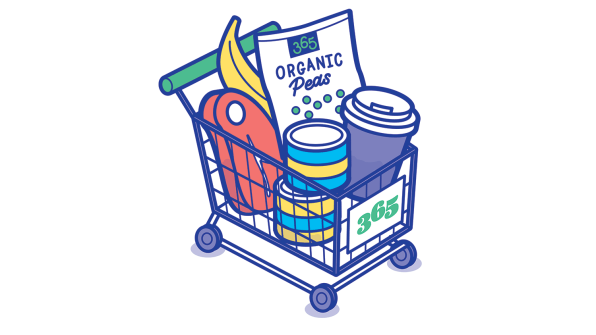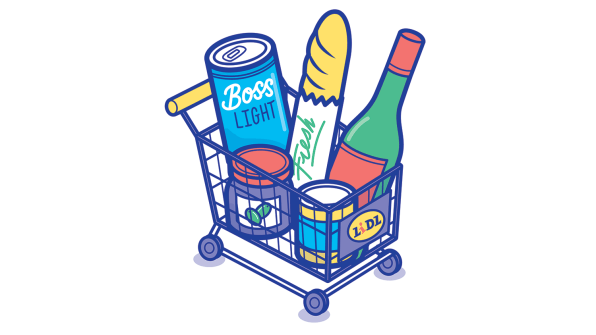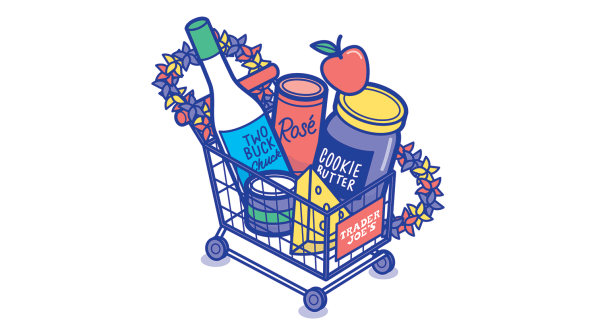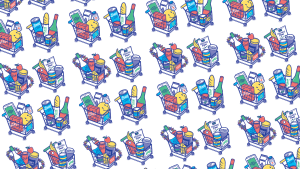Here’s What It Takes To Win The Grocery Wars
Around the time that Amazon was announcing its intent to buy natural-foods pioneer Whole Foods for $13.4 billion this past summer, the little-known (at least in the U.S.) German budget grocer Lidl was opening outposts in Virginia and the Carolinas, kicking off a planned expansion into the States that will bring its number of stores to 100 by next summer. Jeff Bezos’s bold move and Lidl’s international ambition are signs that the grocery wars are just getting started. Here’s how four of the most enterprising chains are planning to keep shoppers—especially health- and budget-conscious ones—in their aisles in the months ahead.

365 by Whole Foods
The big idea: The kingmaker for artisanal condiments and local farmers is taking a more affordable approach to natural food with its year-and-a half-old chain of 365 stores.
Strategy: Make stores more efficient by reducing their size, limiting selection, and adding auto-replenishing technology and order kiosks to trim labor costs.
Signature look: It’s a stripped-down take on Whole Foods’ industrial chic, with neighborly touches such as outposts of local coffee shops.
High-profile friend: Jeff Bezos, Amazon’s CEO, brings unparalleled delivery prowess to this arena.
Secret weapons: 365 Everyday Value, the company’s well-regarded organic label, may appear soon on Amazon.
Lingering question: Will new parent company Amazon appreciate the nascent chain’s appeal?

Lidl
The big idea: Germany’s low-cost grocer is introducing American shoppers to its robust range of private-label goods, presented in an upscale environment.
Strategy: Undercut rivals’ prices with in-house brands. (Like Bud Light? Try Boss Light!) There are even fair-trade and organic lines, and one devoted to fancy imports.
Signature look: As it crossed the Atlantic, Lidl traded its bare-bones aesthetic for spacious aisles and huge, floor-to-ceiling windows.
High-profile friend: Über-German Heidi Klum is launching an exclusive fashion line with the chain.
Secret weapons: Lidl has luxe flourishes, such as on-site bakeries and an exclusive selection of award-winning wines.
Lingering question: Can an outsider break through in an already crowded space?

Walmart
The big idea: The big-box market leader is still a hit in rural America, offering fresh food (and, soon, delivery) to far-flung cities and towns.
Strategy: Pioneer new ways of shopping, including introducing curbside pickup for online orders and a Scan & Go app that eliminates the checkout lane.
Signature look: Ultra high ceilings create the illusion of endlessness and give Walmart its one-stop shop appeal.
High-profile friend: Marc Lore, Jet.com’s visionary, brings his digital savvy as Walmart’s head of e-commerce.
Secret weapons: Walmart has struck new partnerships with Uber and Lyft to test its last-mile delivery service.
Lingering question: As grocery shopping moves online, can Walmart compete with Prime?

Trader Joe’s
The big idea: The cult chain maintains its hipster appeal thanks to cheap and quirky private-label goods like cookie butter and “Two-Buck Chuck” wine.
Strategy: Keep ’em coming back by creating here-today, gone-tomorrow fad products, such as this summer’s $4 four-pack of Simpler Wines canned rosé.
Signature look: A chill, kitschy vibe is enhanced by Hawaiian-shirt-wearing associates, but offset by lines that can wrap around city blocks.
High-profile friend: The high-end brands that manufacture TJ’s own product lines prefer anonymity.
Secret weapons: With its smart use of floor space, TJ’s sells twice as much product per square foot as Whole Foods.
Lingering question: Will Lidl’s American expansion encroach on Trader Joe’s private-label territory?
Fast Company , Read Full Story
(42)


